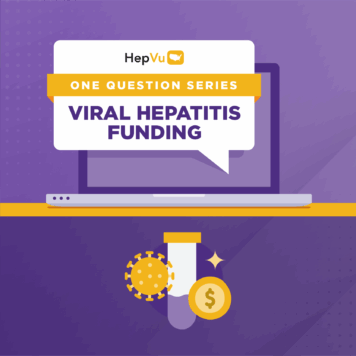Selected and summarized by Ronald O. Valdiserri, MD, MPH, Professor, Department of Epidemiology, Rollins School of Public Health, Emory University, and Co-Chair of HepVu.
Dr. Valdiserri reviews significant articles on prevention, public health, and policy advances in viral hepatitis. This month, he highlights “Frequency of Children Diagnosed with Perinatal Hepatitis C, United States, 2018-2020.” Newton SM, Woodworth KR, Chang D, Sizemore L, Wingate H, Pinckney L, et al. Emerging Infectious Diseases 2024; 30 (1): 202-204.
What question(s) does this study address?
Hepatitis C virus (HCV) can be transmitted from an infected mother to her baby during pregnancy or childbirth, which is why, since 2020, the Centers for Disease Control and Prevention (CDC) has recommended testing for HCV during every pregnancy. Recent studies estimate that the overall rate of vertical HCV transmission (that is, transmission of the virus from mother to baby) is 7.2% but increases to 12.1% for women who are co-infected with HIV (human immunodeficiency virus) in addition to HCV. Unfortunately, available assessments indicate that HCV testing during pregnancy falls short of universal recommendations and only a minority of infants perinatally exposed to HCV are being tested to determine if they’ve been infected.
Newton and her colleagues assembled a retrospective cohort of pregnant women with untreated HCV infection in 7 U.S. jurisdictions (Georgia, Los Angeles County, Massachusetts, New York City, New York State, Pennsylvania, and Tennessee) who had live births during January 1, 2018, through October 9, 2020, so they could compare the observed frequency of children diagnosed with perinatal Hepatitis C during 2018—2020 to the expected frequency of perinatal transmission in these 7 jurisdictions.
What are the major findings of this report/article?
- A total of 2,266 children were born to pregnant women with Hepatitis C in these 7 jurisdictions during the study period.
- Less than one-quarter (427, or 18.8%) of these perinatally exposed infants were tested for HCV infection.
- 47 of the infants were found to be infected with HCV (2% or 47/2266).
- Using an HCV vertical transmission rate of 5.8%, the researchers estimated that at least 131 of the 2,266 infants should have been infected with HCV—suggesting that an additional 84 children with perinatally acquired HCV had not been diagnosed.
- Less than half of infants expected to have perinatal HCV infection in this cohort were diagnosed — only 36% (47 observed/131 expected)
What are the implications for the prevention and control of viral hepatitis?
- Adopting universal HCV testing of pregnant women during every pregnancy will identify women who can receive curative treatment after they’ve given birth and completed breast feeding and identify those infants who should be tested for the presence of HCV infection.
- Because many perinatally infected infants are not tested for HCV and linked to care, and in light of the fact that HCV infection rates are increasing in the U.S. , in late 2023 the CDC updated its testing guidelines for infants and children with perinatal exposure to HCV.
- CDC recommends that all infants born to HCV infected mothers should have a nucleic acid test (NAT) for HCV RNA at age 2-6 months; if the test is negative, no further follow-up is necessary. A NAT test for HCV RNA is recommended for perinatally exposed infants/children aged 7-17 months who haven’t been previously tested. Perinatally exposed children aged 18 months and older who haven’t been previously tested should have an HCV antibody test followed by a reflex NAT for HCV RNA, if the antibody test is positive.
- All perinatally exposed infants with a positive HCV RNA test should be referred to a provider with expertise in pediatric HCV management and their cases should be reported to health departments as specified by state, territorial, or local regulations.
- Children with perinatal HCV infection aged 3 years and older should receive curative treatment with direct acting antivirals.



